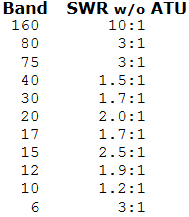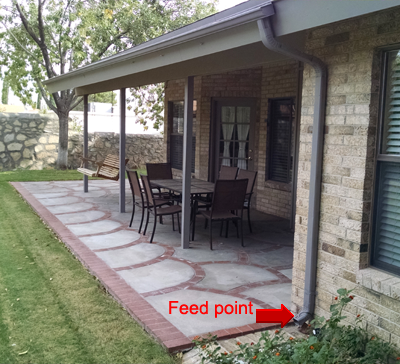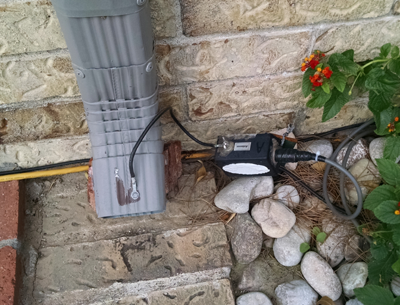|
In hopes of finding a low-profile antenna for shortwave listening, the rain gutter and downspout on the back porch were tried as a random-length antenna. The results have been surprisingly good for shortwave listening using the Crane CCRadioSW shortwave receiver. This configuration has also performed well as a 38-foot end-fed long wire antenna for 80-6 meters despite its low 10 feet height. Local 6 and 10-meter nets were regularly checked into using only 10 watts. JT65-HF contacts have been made on 80-40-30-20-15-10 meters using 20 watts. An ATU is used on all bands.
A 9:1 balun is used at the feed point for impedance matching with a 15-foot ground wire connected to the city water system. An inline isolator was chosen for the feedpoint after experimenting with five ferrite beads attached to the coax. The five ferrite beads are now used at the transceiver end. SWR is acceptable on 40-10 meters, but an external or internal ATU is used on each band to improve matching. Efficiency is better on 15-6 meters due to the low height.
The pictures below show the rain gutter, down spout, and the 9:1 balun from Balun Designs. RG-8X coax can be seen running along the rocks next to the house. All other wire antennas and verticals are located at least 10 feet away on the side of the house.
Continuity between the rain gutter sections was checked before beginning this project since some rain gutters are not metal. This rain gutter was painted to match the house trim, so continuity between sections was an initial concern. Jack Ciaccia (WMØG) offers some good ideas in his article 41 Countries in 5 Hours with 100 Watts into a Rain Gutter. In the second article, Jack uses the SG-230 remote Smartuner at the feedpoint instead of in the shack. This end-fed rain gutter configuration may provide options for limited space or CC&R restrictions.
|



